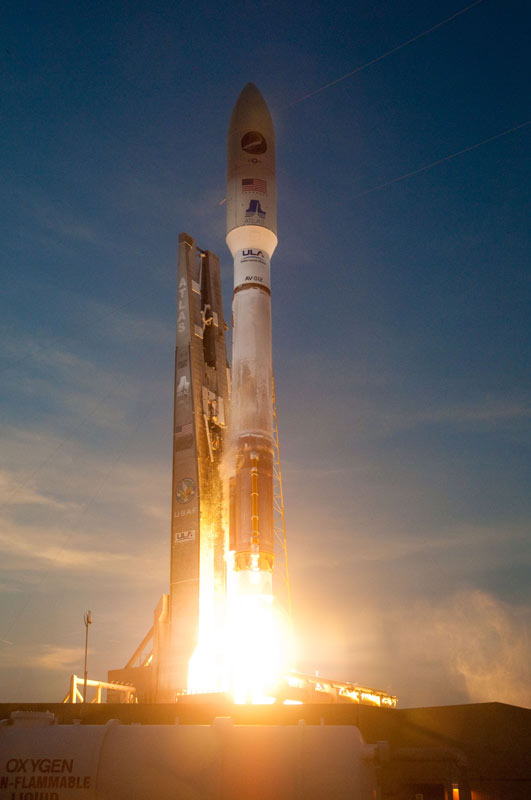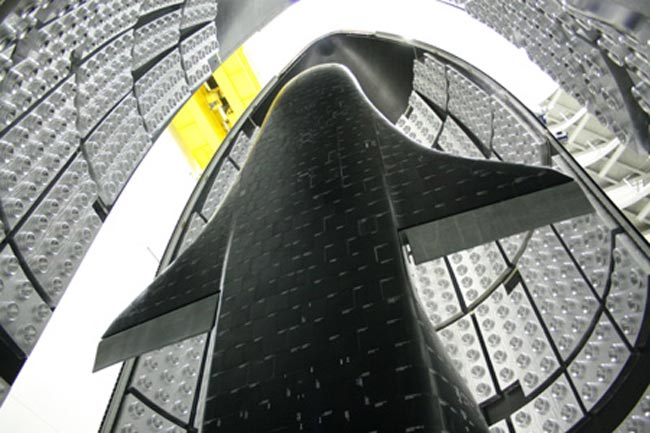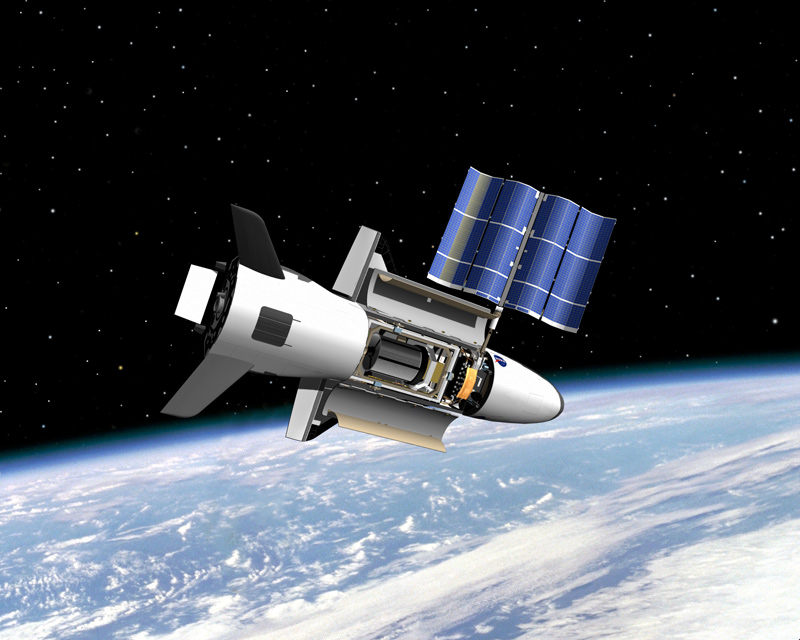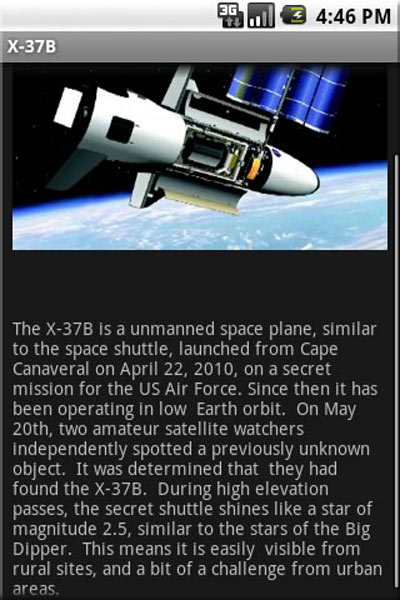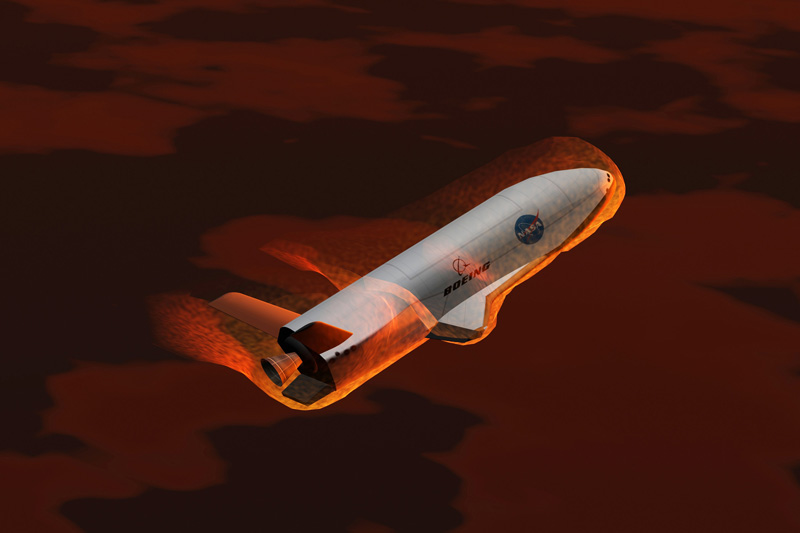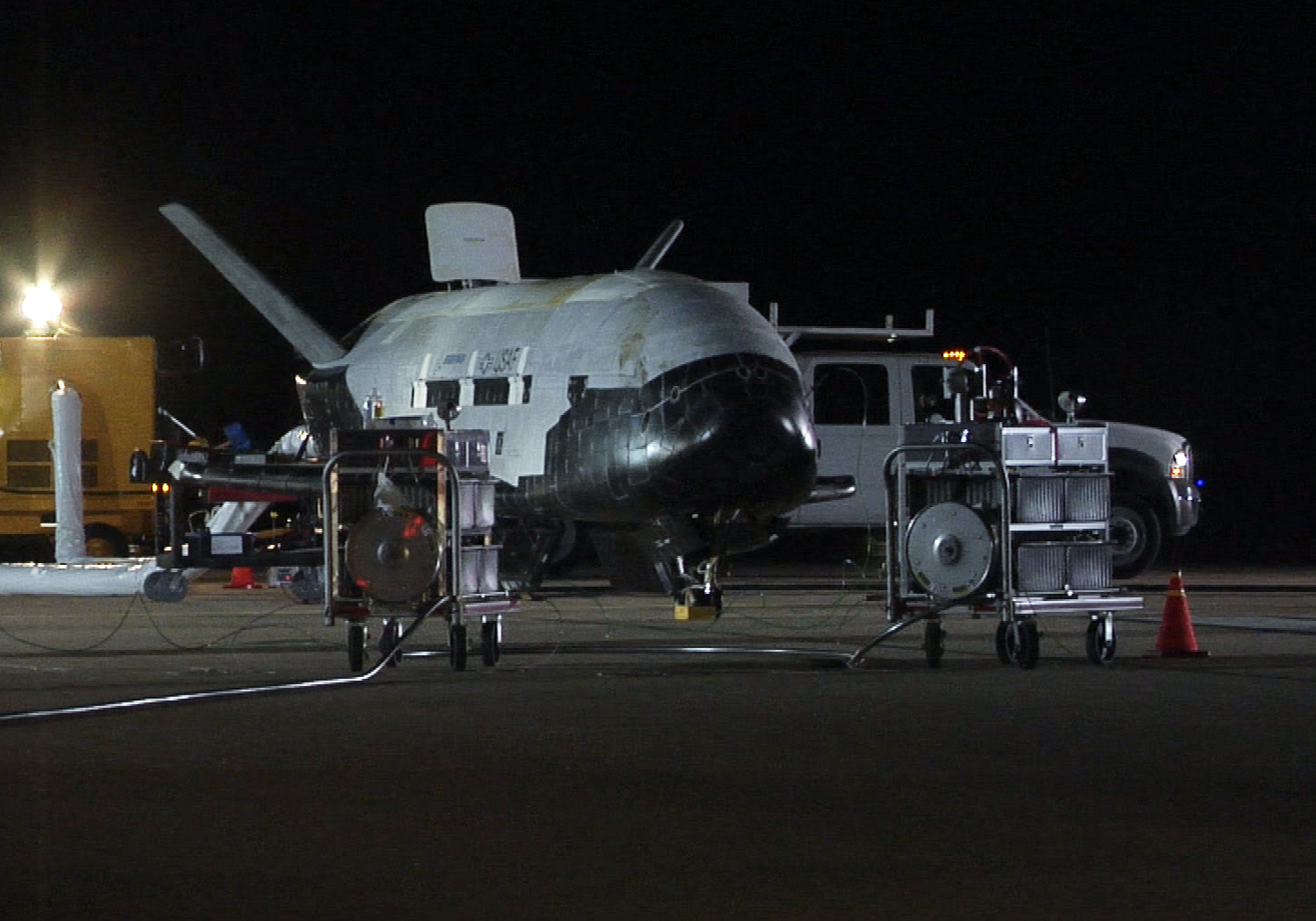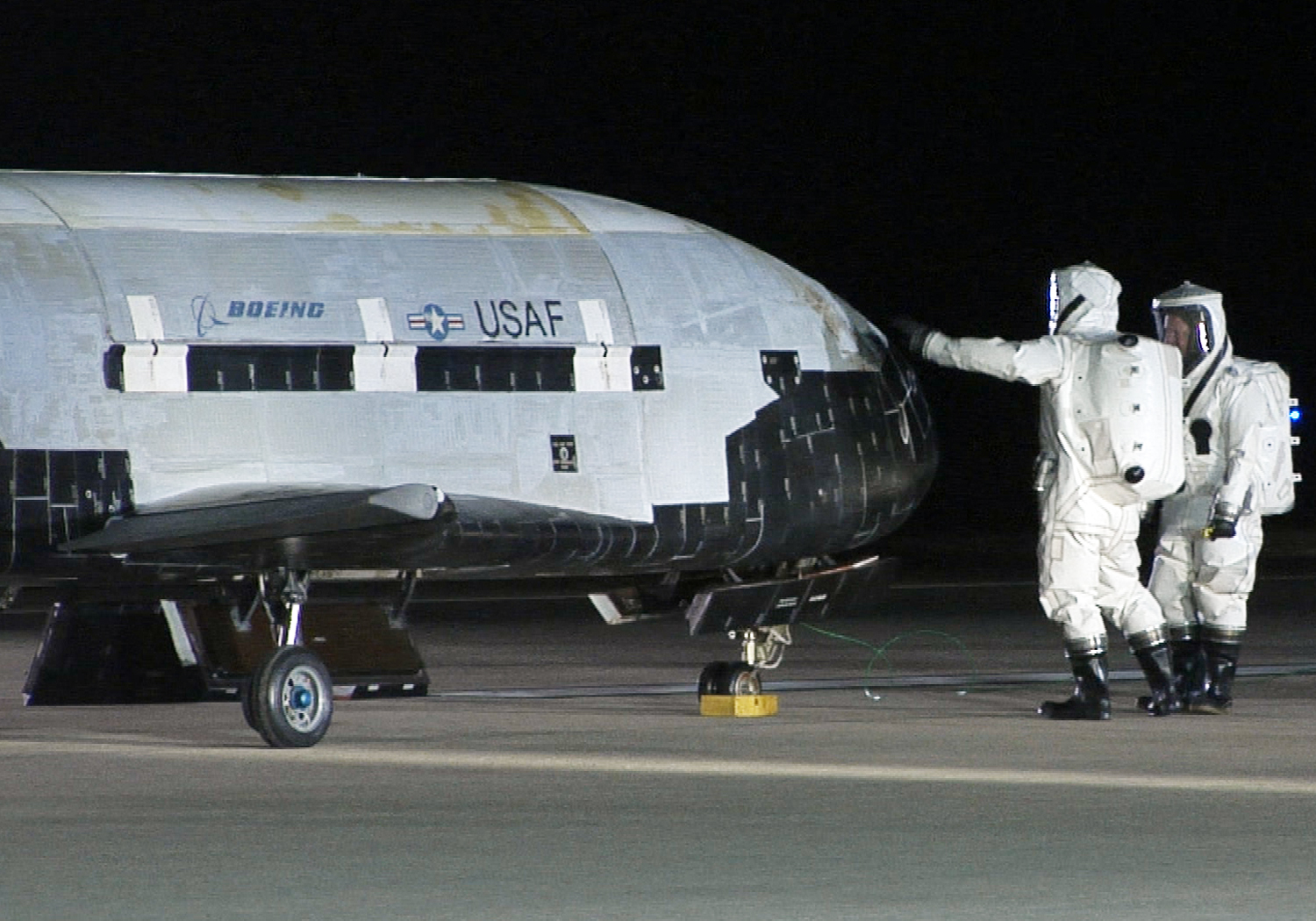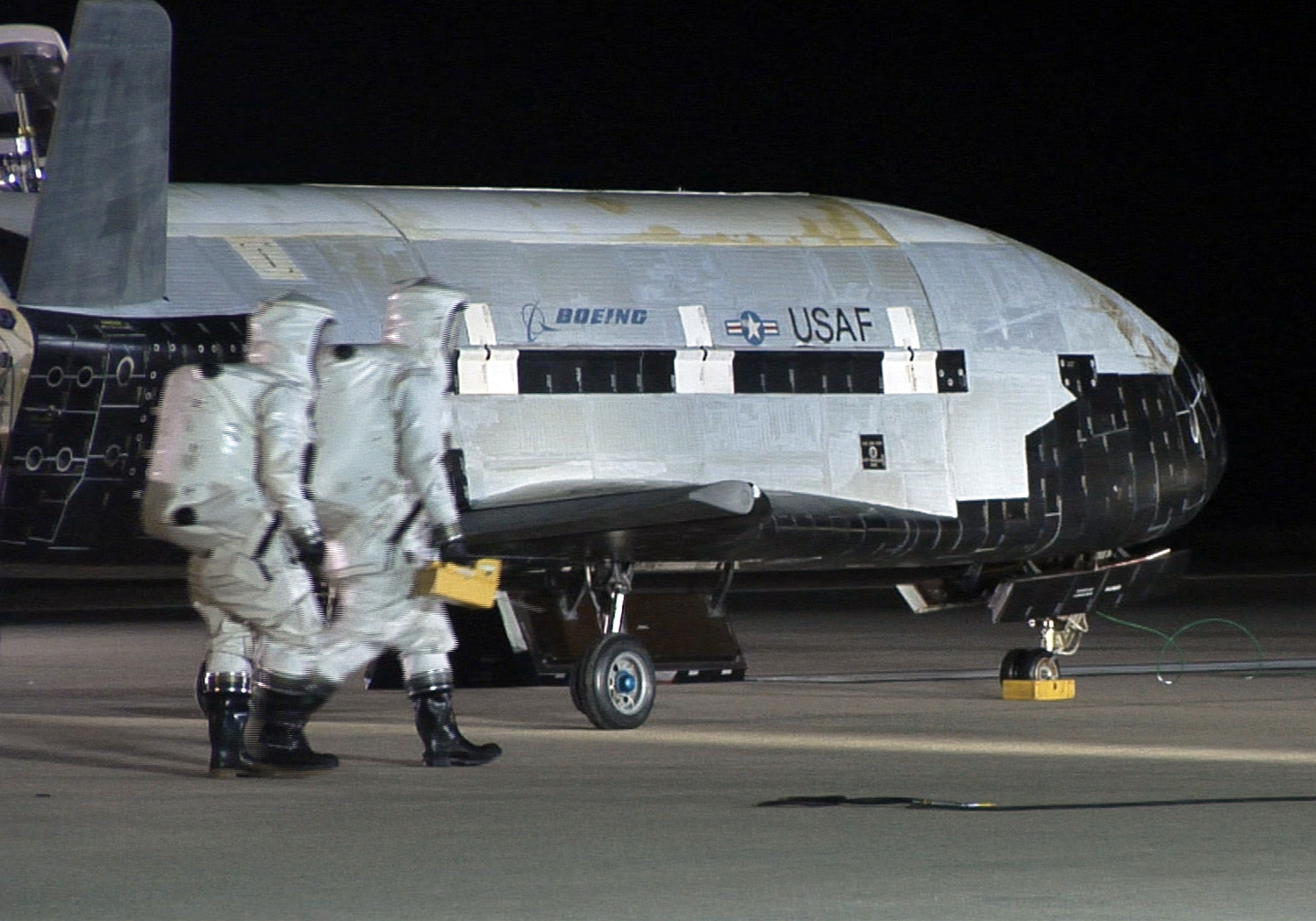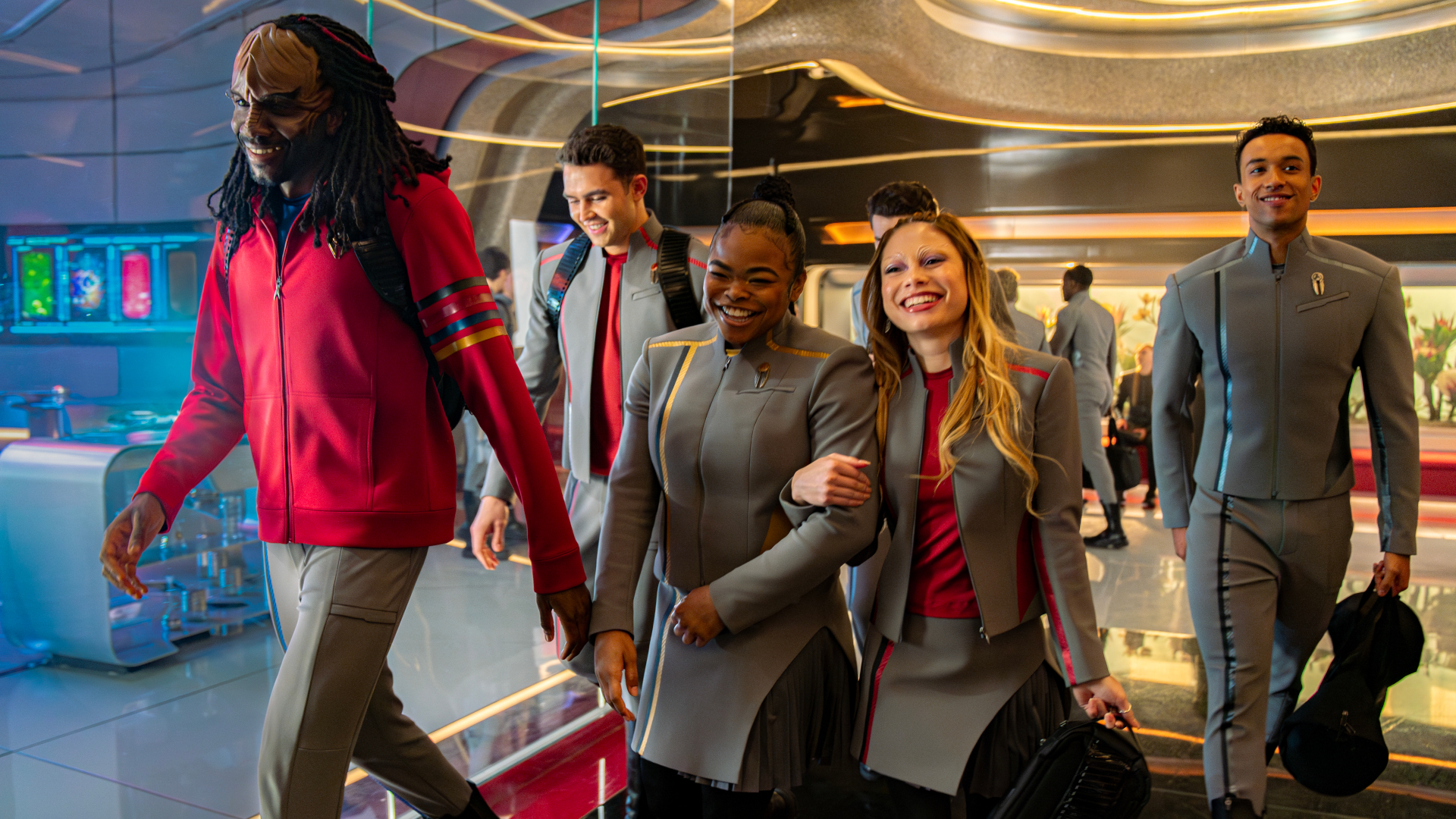Photos: X-37B Space Plane - The Orbital Test Vehicle
Secretive X-37B Space Plane Takes Flight
A United Launch Alliance Atlas 5 rocket with the Air Force’s Orbital Test Vehicle (OTV) launches from its Space Launch Complex-41 launch pad at 7:52 p.m. EDT on April 22, 2010.
Air Force's X-37B Space Plane: An Orbital Spy
A belly view of the U.S. Air Force's X-37B Orbital Test Vehicle as it sits inside its payload fairing during encapsulation at the Astrotech facility in Titusville, Fla., before its planned April 2010 launch.
X-37B: Let's Work
This NASA Marshall Space Flight Center image shows on-orbit functions for the reusable X-37B space plane, now under the wing of the U.S. Air Force.
Secret X-37B Space Plane Spotted
Master satellite spotter, Greg Roberts of Cape Town, South Africa, is one of several amateur astronomers and skywatchers who tracked the first X-37B space plane from Earth in 2010.
X-37B Space Plane? There's an App for That
A screen shot from the Simple Satellite Tracker app for iPhones and Android phones that allows skywatchers to track the secretive U.S. Air Force space plane and the International Space Station.
It's An Orange-y Sky
Early artist concept of the X-37 advanced technology flight demonstrator re-entering Earth’s atmosphere. The X-37 was billed by NASA as a testbed for dozens of advanced structural, propulsion and operational technologies that could dramatically lower the
Job Well Done
With the first X-37B spacecraft back on Earth, the Air Force is now looking ahead to the next launch. The Air Force has ordered the construction of a second X-37B — the Orbital Test Vehicle 2 — for a mission to launch in the spring of 2011.
Breaking space news, the latest updates on rocket launches, skywatching events and more!
Welcome Home
This X-37B space plane's payload bay is seen clearly in this side view, as is the scale of the spacecraft compared to a human. The X-37B began its life in 1999 as a NASA project, then transferred to the Pentagon's DARPA office in 2004. The Air Force took over in 2006. This mission launched on April 22, 2010. The flight's purpose and cost are classified.
Payload Bay Doors
Here, the X-37B space plane is seen in profile as post-landing work continues. The logos of Boeing and the Air Force are visible on the reusable spacecraft's hull. They appear between lines that outline the X-37B's payload bay, which is about the size of a pickup truck bed and can hold experiments, small satellites and a solar array panel that it used to generate power.
X-37B Walkaround
This photo released by the Air Force shows the nose of the mysterious X-37B space plane as recovery crews take measurements and other readings after its Dec. 3 landing at Vandenberg. The X-37B's unique V-shaped "ruddervators" — which serve as its tail stabilizers — are visible as well as a deployed air brake.

Tariq is the award-winning Editor-in-Chief of Space.com and joined the team in 2001. He covers human spaceflight, as well as skywatching and entertainment. He became Space.com's Editor-in-Chief in 2019. Before joining Space.com, Tariq was a staff reporter for The Los Angeles Times covering education and city beats in La Habra, Fullerton and Huntington Beach. He's a recipient of the 2022 Harry Kolcum Award for excellence in space reporting and the 2025 Space Pioneer Award from the National Space Society. He is an Eagle Scout and Space Camp alum with journalism degrees from the USC and NYU. You can find Tariq at Space.com and as the co-host to the This Week In Space podcast on the TWiT network. To see his latest project, you can follow Tariq on Twitter @tariqjmalik.
